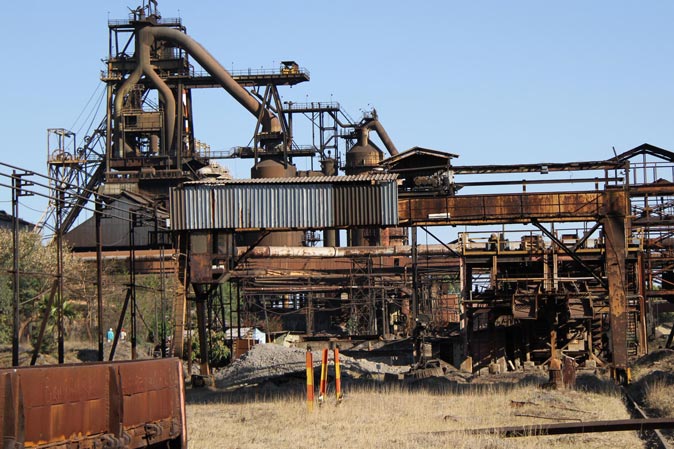By Oliver Kazunga
The Zisco board is evaluating the possibility of coming up with a domestic resource mobilisation strategy aimed at revitalising operations at the defunct steel plant.

Following the appointment of a new Zisco board led by acting chair Dr Gift Mugano last month, efforts are underway to explore new avenues of bringing the closed steel manufacturing giant to its feet again.
Zisco ceased operations in 2008 at the height of hyperinflation.
While negotiations between Government and R&F, a Chinese steel manufacturing firm that has shown keen interest in taking over operations at Zisco were ongoing, Dr Mugano said the board has resolved to explore the domestic resource mobilisation route to re-ignite operations.
“We met as a board sometime back, a week or so and resolved that we need to take the route of local resource mobilisation as we wait for the finalisation of discussions between the Government and R&F,” he told Business Chronicle.
“Our strategy is never to close the door to foreign investors but as we wait for negotiations between Government and R&F to be concluded, we have seen it fit for us not to sit back and relax.
“As we wait for the finalisation of the discussions, we are looking at the possibility of developing a domestic resource mobilisation strategy to revive operations at Zisco.”
In August this year, Industry and Commerce Minister Mangaliso Ndlovu said Government’s agreement with R&F for the US$1 billion revival of Zisco remains firmly in place, but a few loose ends relating to iron ore claims which need to be granted to the investor. Dr Mugano said their hope was that the domestic resource mobilisation strategy could take between four and five months to implement before the Redcliff-based steel manufacturing firm starts operating.
It is hoped that if Zisco resumes operations using domestic resources, the steel plant would be operating at between 20 and 30 percent capacity.
Dr Mugano said the resource mobilisation strategy involved local institutions such as technical universities, banks as well as experts in different fields.
“As a board we have resolved that we need to come up with a strategy to use domestic resources to revive Zisco and we are going to have technical partners such as technical universities focusing on technology,” he said.
“We are also engaging established private entities which also focus on technology so that they become technical partners to deal with a feasibility study.”
After the feasibility study, Dr Mugano said, they were expected to come up with terms of reference for the revival of Zisco and the local technical partners would inform the company’s board on the state of technology at the steel plant.
“The technical partners will also inform us in terms of the state of infrastructure that is at Zisco, is it able to run and if so, at what level of production should we reignite the blast furnace.
“The domestic resource mobilisation for Zisco also involves economists and financial experts who will look at the economic side. For example, how do we mobilise finance to resuscitate operations at Zisco,” he said.
Due to Zisco’s closure, the country is importing US$400 million worth of steel and its products annually. Against this background, Government has said urgent steps were needed to invest and develop anchor industries for strategic sectors.
“Looking at the existing industries that use steel and its products in their production processes, we need to do a research to find out what kind of steel products they want,” Dr Mugano said.
“We will also look at their annual demands and see if we can produce for them using linkages with that sector’s value chain system. We also want to look at a financing model where financial institutions locally can pool their resources together to oil companies such as the National Railways of Zimbabwe (NRZ) and Hwange Colliery Company Limited so that they deliver coal to Zisco”.
At its peak, the former steel giant employed over 5 000 people. The Chronicle






